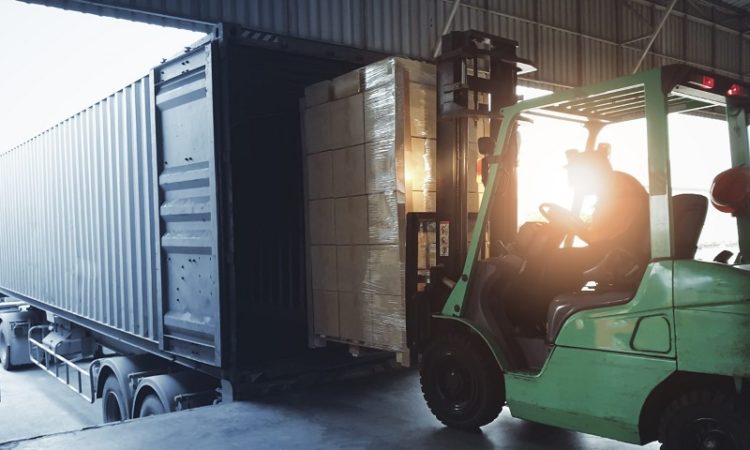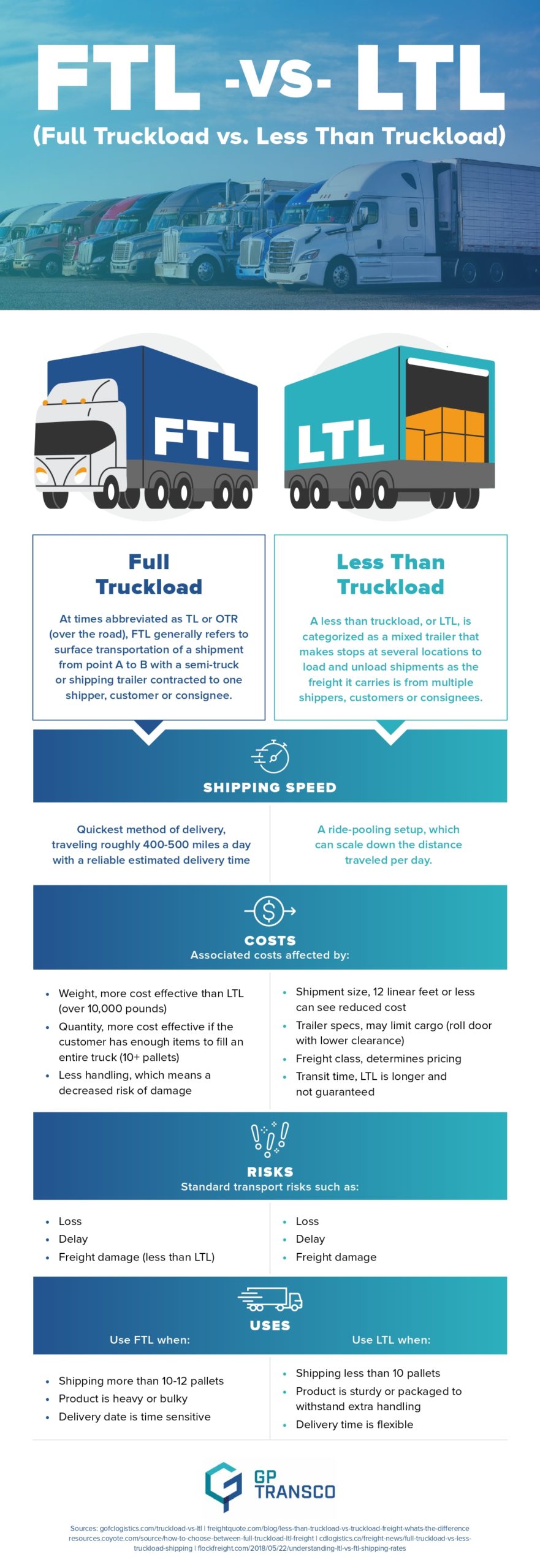
Getting product where it needs to be and at the best price is a complex undertaking. With several services available, choosing which one is best often comes down to the amount of freight needing to be shipped. This is especially true for full truckload and less than truckload shipping. To help, here is a look into these two services along with certain conditions when it’s best to opt for one versus the other.
First up is full truckload (FTL) shipping. At times referred to as OTR (over the road), FTL is the most common method of transport. In fact, according to a 2019 government report, FTL shipping accounted for 46.4% of the U.S. transportation market, while LTL accounted for 11.3%. The FTL shipping method only loads one shipper’s freight onto the hauler even if the entire space isn’t required. The transporter is typically a dry van trailer, although open deck and refrigerated trailers are also common.
As the customer is paying for the entire space, companies generally opt for FTL when the cargo is large enough to fill it. FTL is recommended for hazardous or fragile shipments as there is less likelihood of damage. It’s also considered the better route with high-value items, especially when the cost of the shipped product outweighs that of using a dedicated truck. Companies also go with FTL when the shipments are time sensitive as this method is typically much faster than LTL.
This brings us to less than truckload shipping. Commonly referred to as LTL, this method of transport can be characterized as a ride-pooling arrangement as it hauls shipments from multiple companies on the same carrier. The transporter could be a semi-truck hauling a mixed trailer, train cars or even a train itself. As the freight it carries can come from a range of shippers, customers or consignees, it’s necessary to stop at numerous locations to load and unload cargo. For more information, check out Bulk Hauling services augusta, ga.
LTL is often ideal for smaller businesses with freight only requiring one to a few pallets. Using a partner network to consolidate goods with shipments from other companies through LTL can potentially reduce costs significantly. It comes with an added risk, however, of freight damage as the contents of the carrier may be moved more frequently than they would if only being delivered as a whole.
The U.S. trucking industry is immense and, therefore, generates a lot of revenue, with the FTL and LTL shipping services market expected to be valued at $19.91 billion by 2028. As such, when researching which shipping method is the best value, businesses should look to those with experience in the industry to make more informed and cost-effective decisions.
For more information regarding FTL and LTL shipping, please see the accompanying resource.

